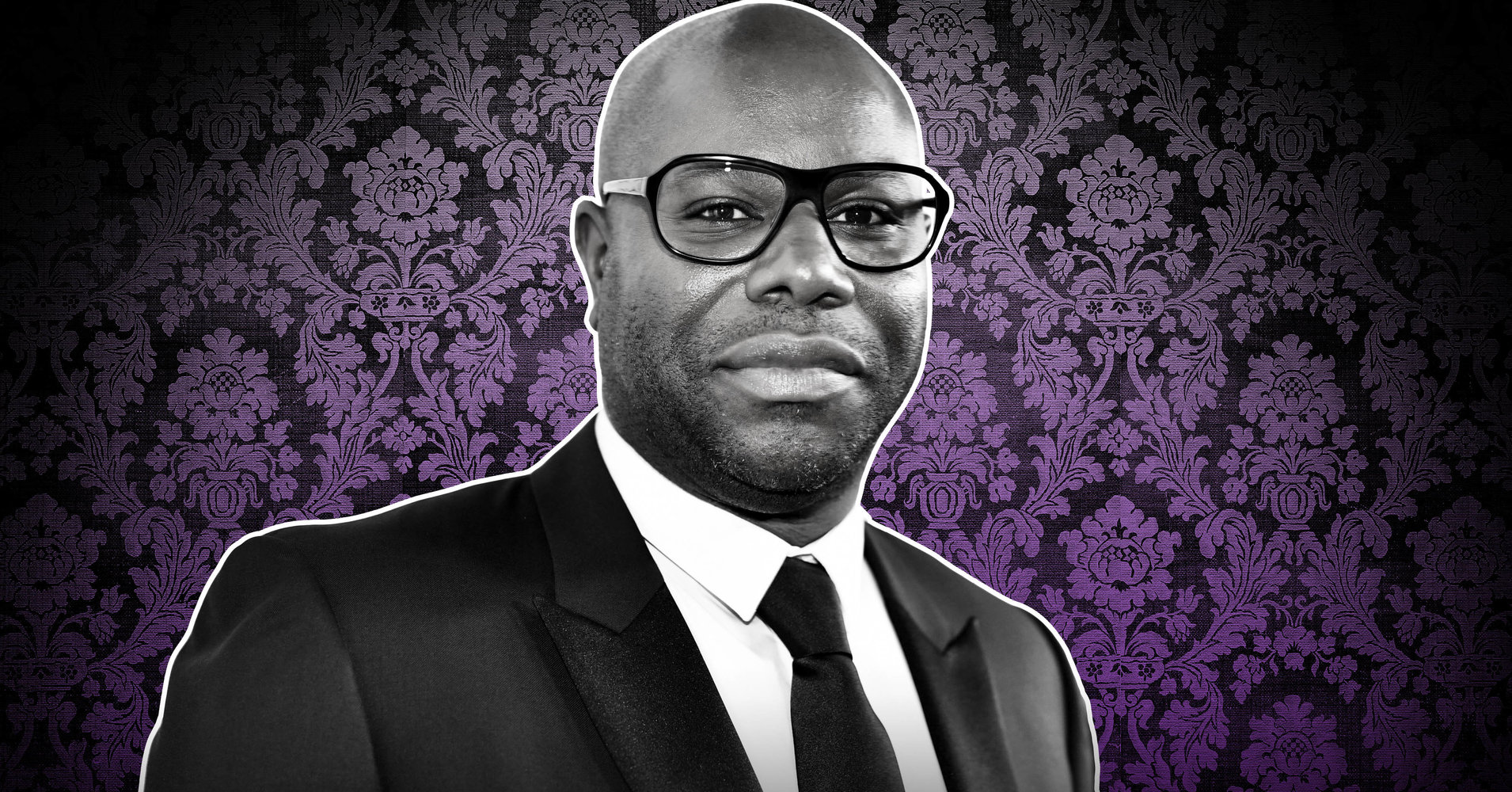[ad_1]
How’s this for an offer you can’t refuse? With his new movie, the director behind 2014’s Best Picture winner, “12 Years a Slave,” is channeling one of the most famous films ever made.
It’s not so much that Steve McQueen’s “Widows” borrows beats from “The Godfather,” though both are crime sagas that feature threatening mobsters, brutal shootouts and calamitous betrayals. No, it’s more about the movies’ shared “communal scope,” as McQueen put it when we talked last week. He wants “Widows” to have the same universal appeal as Francis Ford Coppola’s masterpiece.
Starring a blue book of Hollywood’s finest, “Widows” twists and turns with fist-pumping electricity, indicting capitalism, American politics and racist police without needing a single sermon to drive home its messages ― unless, that is, you count a TED Talk-worthy admonishment from Viola Davis: “We have a lot to do; crying isn’t on the list.”
Co-written with “Gone Girl” and “Sharp Objects” savant Gillian Flynn, “Widows” follows four women uniting to pull off the heist that killed their husbands and saddled them with debts. At the center is Davis’ Veronica, a strong-willed Chicagoan married to the ill-fated thieves’ ringleader (Liam Neeson). Davis is joined by Michelle Rodriguez, Elizabeth Debicki and Cynthia Erivo, who are pitted against corrupt lawmakers (Colin Farrell, Robert Duvall), menacing crime chiefs (Daniel Kaluuya, Brian Tyree Henry) and other assorted bystanders (Carrie Coon, Jacki Weaver, Jon Bernthal, a fluffy white dog).
The project underscores how much McQueen’s style and sensibilities have shape-shifted across each of his four movies. “12 Years a Slave” elevated the 49-year-old British filmmaker’s profile, but he first drew art-house audiences with 2008’s “Hunger” (a drama about the 1981 Irish hunger strike) and 2011’s “Shame” (a stark portrait of a sex addict featuring a highly naked Michael Fassbender). “Widows” is a ballpark away from any of those, less a meditation and more a decree.
McQueen, chipper and eloquent, called me last week to discuss “Widows,” which premiered to raves at the Toronto International Film Festival in September and opens in theaters Nov. 16. We talked about Davis and Neeson’s intense make-out scene, Trumpian parallels and why McQueen wanted this to be his version of “The Godfather.”
Of your movies, “Widows” has the most obvious commercial appeal. Does it feel like a different experience for you?
Yes, it does. The biggest ingredient missing when you finish a movie, of course, is the audience. The response we’ve gotten, basically since Toronto, has been amazing. I think the audiences are responding to it as a group. It’s like being on a roller coaster ride, where people watching the movie are gasping and cheering and applauding and laughing. It’s like an added soundtrack to the movie that obviously isn’t there when you’re making it. I can’t think of the word. What’s the word I’m looking for? Oh God, I can’t even think of the word! It’s been — OK, how do I say this? I’m trying to get the right sentence. It’s almost like audiences have been responding in unison. That’s the word. Thank God for that. Found it in the end.
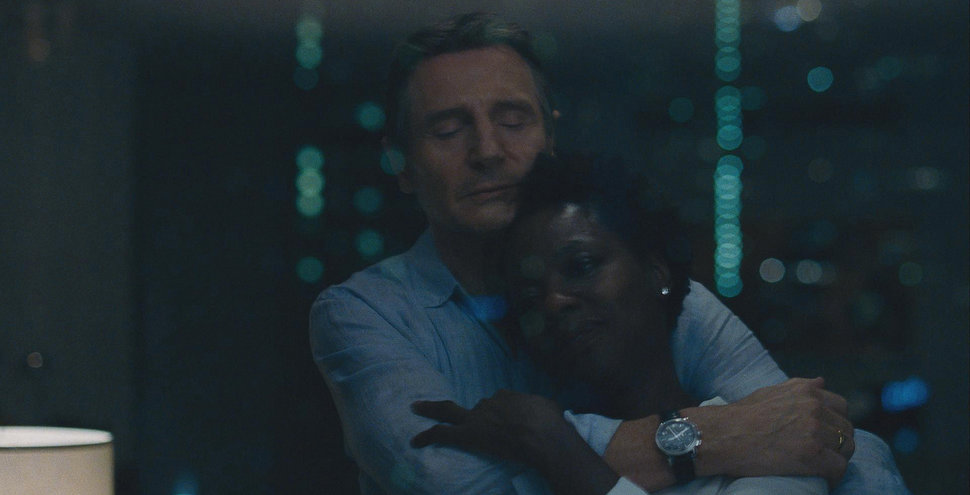
Fox
Let’s start at the beginning, with the opening shot. It’s a striking image that immediately grabs people because it’s so intimate: Viola and Liam in bed, really going at each other’s faces. How did the three of you arrive at what that passion would look like in that very first moment?
Firstly and foremostly, I think they enjoyed being together as actors who appreciate each other. It’s one of those things where I just said, “Go for it. Get your tongues out!” I needed to establish from the very beginning of the picture that these two middle-aged people were passionately in love with each other. You have to have that stamp from the immediate beginning of the picture to put into effect the relationship and the meaning of that relationship and the passion and love they have for each other ― and that was through the kissing. Also, I enjoyed looking at it. It’s quite good. There you go.
It’s also gripping because you juxtapose their romance with a raucous, violent shootout. What does that dichotomy mean to you?
For me, it’s like a caress and a slap, a caress and a slap. Just as you get comfortable, you get woken up. That was what I was interested in going for, to throw the audience from one side of the cinema to the other side of the cinema. Again, when you enter into that space, even if you’re there with your popcorn and your soda, it’s, “Oh, I’m in.” We use that to get the audience into the picture in the initial opening scenes, basically.
It’s quiet versus chaos, which is interesting in relation to your previous movies. “12 Years a Slave,” for obvious historical reasons, was labeled an important movie. Typically that’s a calling card for art-house films and Oscar darlings. I think, in 2018 especially, “Widows” has a certain importance about it too — and it’s still very much a twisty crowd-pleaser with blockbuster appeal. Were you conscious of blending those sensibilities?
Yes, I was, in a way. When people think of “The Godfather,” or when people think of “Chinatown,” you can go from some sort of accountant to some guy working in a florist’s shop or a bookshop, or someone working as a top lawyer somewhere, or what have you, and it doesn’t matter. [It could be] a guy working as a construction worker. All those guys will be interested in those movies. It has a certain communal scope. It doesn’t matter where you come from; everybody’s going to be looking at that picture. And that’s what I wanted. I wanted to make a picture that could be seen as high or seen as low. And also, the fact of the matter is that the larger matter is whether it’s good or bad. End of story. I don’t care if it’s Wong Kar-wai or, I don’t know, who’s the most commercial filmmaker out there? Spielberg? I don’t know. Doesn’t matter to me.
Also, what I wanted to do was make a roller coaster ride of a movie. What I mean by that is, in every heist picture, as soon as it’s moving, you know there’s going to be this journey. Therefore, I wanted to take the audience on this roller coaster ride through this political, social environment. All the dips and swirls, all of that stuff, when you’re in that situation as an audience member, you know there’s going to be some kind of comeuppance at a certain point.
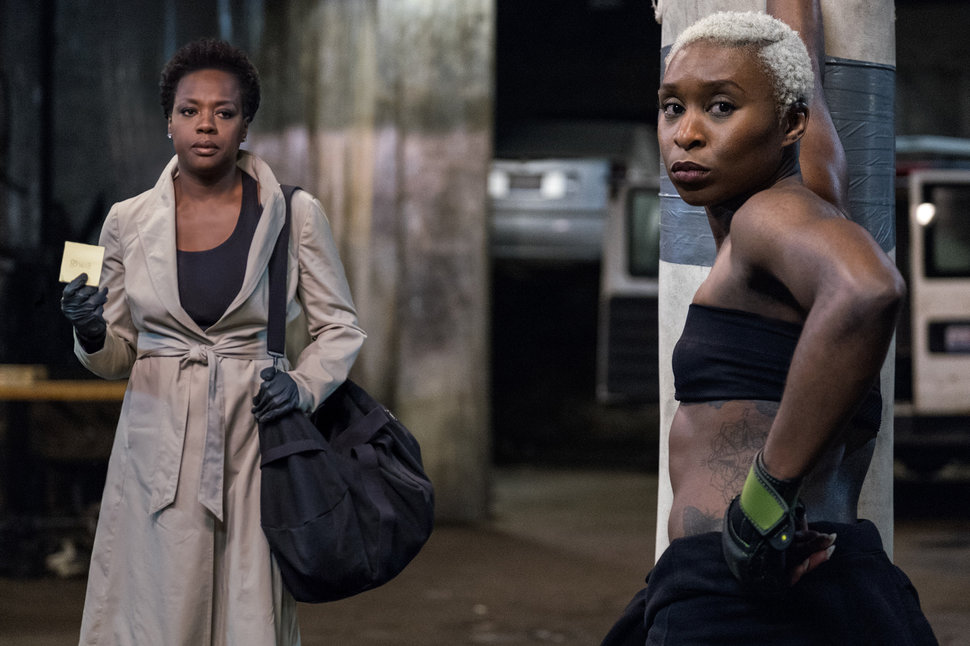
Fox
The heist movie is a familiar genre, but “Widows” twists its tropes. Here, the heist is a necessity instead of an act of showmanship. Did you study other heist films to consider what to emulate — or, more specifically, what not to emulate?
No, not at all. It was the story. It’s like anything else. Genres are meant to be broken. Before there was a heist, it was something else. It was just about how you break rules. So I wasn’t thinking about, “This is a heist movie and that’s not.” I was thinking, “What’s a good picture and what’s not?” These women’s husbands died in an attempted heist, and the women have to pick up the reins. I take the nucleus of that narrative and place it in Chicago. So to study heist movies doesn’t do any good for me because it’s about tension, it’s about suspense, it’s about timing, it’s about pacing, it’s about performances within those spaces.
When “12 Years a Slave” came out, you talked about finding sympathy in the Michael Fassbender character, a brutal slave owner, and not seeing him merely as a monster. In a year like this, do you feel similarly about Colin Farrell’s character in “Widows,” a corrupt legacy politician who uses Chicago’s have-nots for gain? The same goes for Colin’s farther, played by Robert Duvall.
Well, did I use the word “sympathy”? I don’t think I did use the word “sympathy.”
No, I’m extrapolating a bit. You said you saw him as a “human being” instead of a “devil.”
Sure, I don’t shy away from that. He does bad things, but he doesn’t understand why. It’s a similar thing with Colin. He has empathy, to a certain extent, even if he’s a person you completely disagree with. You can’t tell the truth with one-dimensional characters. In some ways, I kind of pity someone like Mulligan, Colin Farrell’s character. He has an inkling of what’s going on, but somehow he’s been forced down this road — maybe by his father, maybe by his assistant, but also by himself. Even if he knows better, he’s found the correct path to succeed.
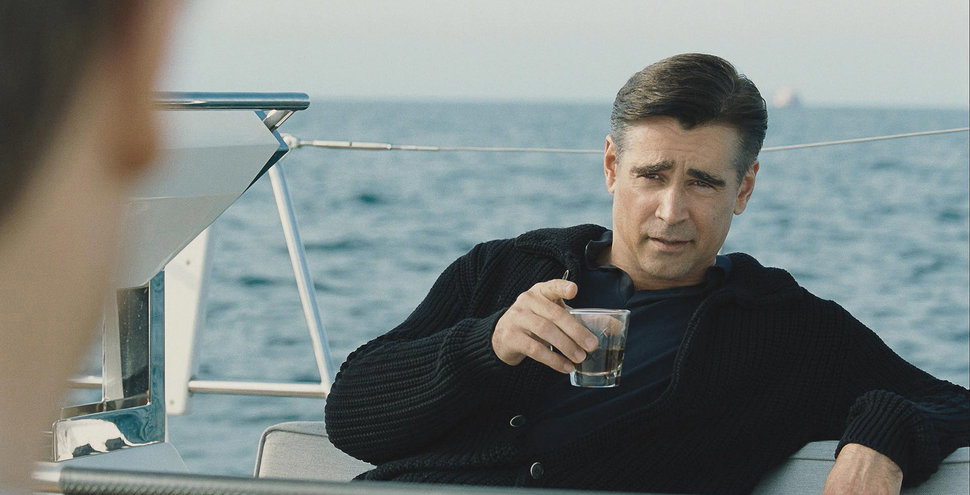
Fox
Robert Duvall’s character evokes the sort of archetypal white, male, old-guard politician who rants about illegal immigrants. Or, framed differently, he evokes, say, Donald Trump. Some people will certainly read it that way because of what’s going in America at the moment. Was that intentional?
I think it’s always been there. Ten years ago, 20 years ago — it’s always been there. It’s nothing new, so I didn’t have to flex my muscle or think that hard or think of Trump to do it. But also, for Robert Duvall, he’s a survival character. Check out Chicago. Jesus Christ, who’s that notorious mayor of Chicago? Richard Daley, for example. And there are more around the country, and others in Europe. That kind of nepotism having a grip on power is nothing new.
Also, you have to understand that character. He can’t be a one-dimensional character. This is a person whose wife died at an early age, and he’s raising a son. There are all kind of expectations being put on his future.
Thinking of him as a survivalist is an interesting angle. The thing I love about “Widows” is that it’s a movie full of paradoxes. One of the more humorous juxtapositions is Viola Davis’ fluffy white dog. Here she is getting roped into this outsize crime, which itself has ties to all this inner-city corruption, and the dog ends up exemplifying her everdayness. She won’t do anything without making sure it’s cared for.
It’s all she has. She’s lost her husband — and something else, but we can’t talk about that. It’s the only thing she has. I’m happy people are laughing, but the importance of that dog is that it softens her. A lot of people could think Verionica is a bit of a B-I-T-C-H person because of the weight of her recent past, which we have no idea about, but we find out later on. The dog softens her in a very subliminal way: OK, she does have this thing she cares for. It’s a huge plot piece in the picture. Also, at the beginning of the picture I said, “Well, we have to have her put the dog in a kennel because she doesn’t know if she’s going to come back or not.” So yes, I love that people will realize there’s a reason and a purpose for this — it’s not an expensive accessory; it’s a really important piece in her life, and in the picture’s narrative. I love that sort of disguise.
Filmmakers often say you shouldn’t work with children or animals. How was the dog on the set?
Beautiful. Viola, I think, wanted to keep her. She was a great dog, a wonderful dog. I just love the fact that when you first look at it, you think nothing of it, and all of a sudden it becomes bigger than your first impression. There’s a lot of icebergs in this picture. That’s what’s keeping people stimulated and excited.
One thing that’s interesting about this picture is a lot of people have said to me how much they want to see it again. Like a roller coaster ride, first you don’t know what’s going to happen. Then you know what’s going to happen, and even with the anticipation, you get another thrill. That’s why I made this picture for 200 or 500 or 1,000 people. I didn’t make it for some person with a laptop popping in and out of the fridge every five minutes. It was very important to me to have that response from the audience. It is a group-participation picture.
I’m sure that’s something you didn’t hear a lot with your previous films. They’re much tougher to watch, emotionally.
The thing about it is, people label you as soon as you come out the door. I’ve only made three pictures before this one! This is my fourth picture! And people like to have an idea of who you are before you’re able to make any grounds. People say, “Oh, it’s not like a Steve McQueen picture.” Well, man, I’m just starting. I need to actually get somewhere first before you start thinking about what kind of person or filmmaker I am.
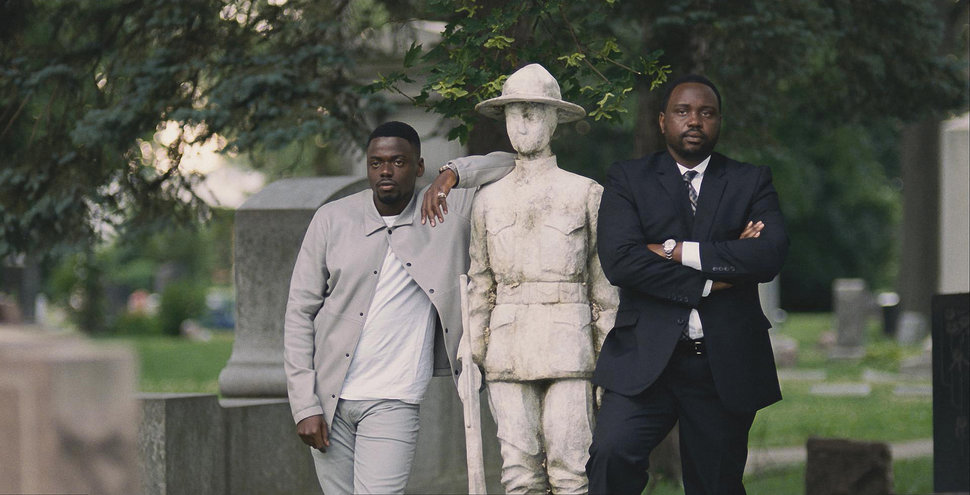
Fox
You’re not ready for the quote-unquote “Steve McQueen picture” to be a crystallized idea that gets perpetuated as if you were someone like Spielberg, who’s made a movie almost every year for four decades.
For sure. The whole idea of being labeled is disconcerting anyway. As an artist, you’re always looking and trying to find some sort of reasons to sacrifice a lot. You leave your family behind, your friends behind, and go to live in another city for a year or so.
Even if you’re not ready for people to make conclusions about your body of work, something each of your movies has is a striking scene captured in one long take: Michael Fassbender talking about the strike in “Hunger” and running in “Shame,” Chiwetel Ejiofor with the noose around his neck in “12 Years a Slave,” and now the Colin Farrell shot in “Widows” that pans from low-rent Chicago to all the privileged mansions mere blocks away. Is there a throughline with these senes? Do they have anything in common beyond the technique?
No, not at all. What happens is that I never put a stencil on a situation. I don’t come at a situation and say, “I will do this in this shot, and this in that shot.” Basically, it’s what the narrative is saying and how it needs to be shot. So the whole idea of a tracking shot is like having a two-shot or an over-the-shoulder shot; for me, it’s just that. It doesn’t mean anything other than, “What is the best way of depicting that particular part of the narrative?” It’s not about me flexing my muscles and saying, “Look what I can do.” How can it serve the story better? Because that’s what it’s all about.
If I make a film where that doesn’t happen, great. Maybe I’ll make a film where there’s not an over-the-shoulder shot. But because that is much more seen as conventional, people don’t raise their eyebrows at it or bring attention to it. That shot, with Colin in the car, is so much about the narrative and the city. The movement from poor to rich, the conversation that’s happening — we find out about five different things through that journey.
Also, I’m a British filmmaker who likes to stretch a pound as far as it’ll go.
[ad_2]
Source link

